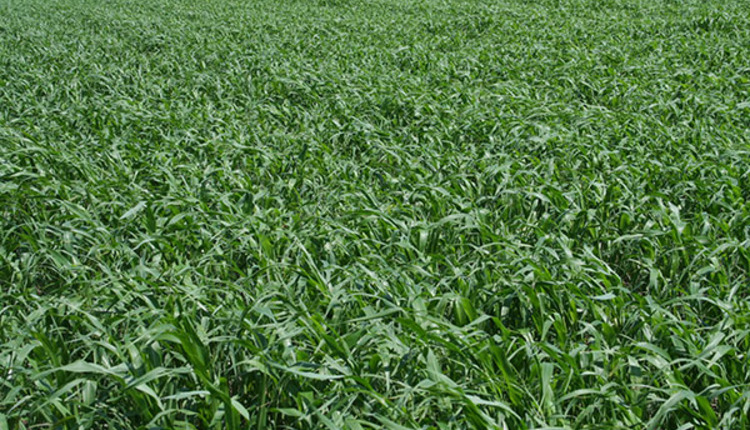Prussic acid alert — both North and South |
| By Hay and Forage Grower |
|
|
 The potential for prussic acid (hydrocyanic acid) poisoning has made several appearances on the forage newswire this past week, but for more than one reason. In the North, there is the threat of an impending frost; farther south, ongoing drought conditions present the risk. Prussic acid forms in sorghum species that are severely stressed by events such as a frost, drought or hail. The potential for livestock poisoning and preventative recommendations depend on the size of the plant, the extent of the stress and how the crop will be harvested. Extension forage specialists at Texas A&M University, Vanessa Corriher and Larry Redmon, note that plant growth rate is also a factor. They relate in a recent edition of the TAMU AgriLife Extension’s Forage Fax, “High concentrations may be associated with rapid growth, such as shortly after a rain irrigation on previously drought-stressed fields, or warm weather after a cool period. Under good conditions, toxic concentrations can also form in young, rapidly growing plants.” If plants enter into a rapid growth stage following a stress such as drought or an extended cool period, the TAMU forage specialists suggest waiting at least two weeks after the plants begin to grow before grazing. Under normal growing conditions, sorghum species are considered safe to harvest once they reach about 24 inches in height. If plants are frosted after they reach this height, don't cut or graze the crop until the plant tissue has completely dried (usually five to six days). If the crop is shorter than 24 inches, or if new tillers begin to grow, do not cut, graze or green chop the forage until an adequate height is reached, or until all plant tissue is dead and dry. Harvesting frosted sorghum forage as silage or dry hay is a much safer proposition. Prussic acid dissipates during both extended field curing and during the fermentation process. Though it’s rare to hear of a situation where cattle are affected by prussic acid poisoning, the safe play is to get out ahead of the potential problem and harvest before a frost occurs. Remember, like high-nitrate forage, the poison is always in the dose. If forage is suspected to be high in prussic acid, there is always the option of sending a forage sample to a testing lab for analysis. Further, diluting the suspect forage with other feeds can go a long way in averting any problems. |
